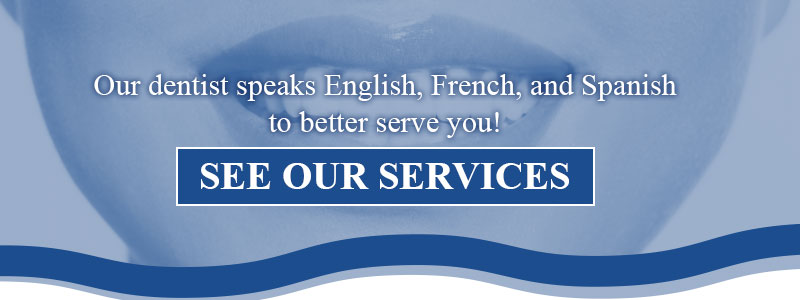In our previous blog, we laid out a little bit of the basics surrounding Denti-Cal, California’s Medi-Cal assistance program through federal Medicaid. If you have any basic, fundamental questions about Medi-Cal or Denti-Cal, be sure to read that one before going on!
Today, we’ll dive a little more into the payment system built into Denti-Cal, and why that system benefits patients and dentists alike, especially when compared to other states in the nation.
Your Family’s Dental Expenses
As we talked about previously, Denti-Cal exclusively features a Share of Cost program, meaning that patients pay a certain portion of their dental costs based upon their family size and household income. When looked at alone, you may think “of course, how else would it work?” Simply put, dental benefits in other states often look much different than this system and, sadly, often cover far less people because of it, especially adults, which are often not covered at all.
Emergency-Only Medicaid Coverage States
There are 18 states that feature only coverage for adult dental emergencies. These states are primarily southern, though a few are in the Northeastern United States. Here, Medicaid offers no benefits for adults, citizens and otherwise, regardless of circumstance, except in cases that are deemed emergencies; often this means only tooth extractions or services that are necessary to immediately save a tooth or stop someone from bleeding. These grim policies offer very little to the disabled and poor of their states, and don’t come anywhere close to comparing to California’s Denti-Cal’s dentistry coverage.
Comprehensive Dental Coverage
The remaining 32 states feature some degree of comprehensive dental coverage under their state-run Medicaid program, including California’s Denti-Cal program. Of these 32, coverage criteria vary greatly based on specific circumstances and dental needs; that is to say, you cannot expect the same level of coverage in each of these states. For some states, routine check-ups and possibly x-rays are the only thing covered above the emergency-only states (a major step up, but not anywhere close to what can be considered comprehensive preventive maintenance).
Restorative & Preventive Dental Care
About half of the states in the nation, only a few less than the 32 that offer some degree of comprehensive coverage, go beyond routine exams to actually include things like fillings, deep cleanings, x-rays, sealants and services like root canal therapy. Including California, these 26 states allow adults access to most dental services that are necessary to maintain dental health throughout their life, even if this isn’t yet every potential option. Nearly all of these also include restoration to damaged or broken teeth, including emergency chip repair and even more advanced procedures like inlays, onlays, and crowns.
Periodontal Treatment, Dentures, & Oral Surgery
Most of the states alluded to above also cover “necessary” periodontal and oral surgery treatments. For many of these states, it is important that the patient and dentist follow strict guidelines for the diagnosis and execution of these larger surgeries to ensure proper coverage. These services can include deep gum cleanings, dentures, and even dental implants. At this level, the coverage varies wildly from state-to-state, and can require guidance from your local Social Security Office to ensure that your procedures will be covered; it is extremely important to note that in all of these states it is possible that your benefit could be initially rejected, but later approved after an appeal from the patient and dentist.
Orthodontics & Cosmetic Dentistry
Until now, California’s Denti-Cal program has covered everything listed, often much more comprehensively than other states listed. Currently, however, Oregon and the District of Columbia (Washington D.C.) are the only states to feature Medicaid-backed orthodontics benefits for adults. Some states do feature programs for children, especially those in foster care programs, to receive orthodontics at no charge. Cosmetic dentistry, however, is not covered in any state by a Medicaid program, as it would directly violate the federal statutes for Medicaid management, loose as they may be. This includes things like teeth whitening, bleaching, veneers, and more.
Reading Between the Lines
While California appears to rank similar to about 15-20 other states, it actually stands above many of them in the handling of benefits for those in the Medi-Cal program. For instance, California’s Denti-Cal program explicitly bans the use of a Managed Care System for beneficiaries, which effectively transfers control of care, dentist options, and even eligibility appeals and coverage decisions to a private entity. Under the Share of Cost program, patients are treated equally based upon specific qualifying criteria, and are free to see far more dentists for care under the more broad guidelines for coverage eligibility. Ultimately, we are fortunate to have access to the Medi-Cal, especially the generous Denti-Cal program, as it ranks easily among the top in nation for patient-friendly access, understanding, management, and even coverage.
Find A Dentist
At Balboa Victory Dental Office, we are proud to accept patients that are part of the Medi-Cal program into our office each and every day from the Encino and Balboa Lake areas. We believe that having access to a dentist should be a right that everyone gets to enjoy. If your home or work is located near our dentistry, then be sure to look us up for access to our comprehensive suite of general dentistry services backed by our ability to accept patients that speak English, Spanish or French. Even if you’re not in our neck of the woods, we hope you’re able to find a dentist near you to visit regularly.




